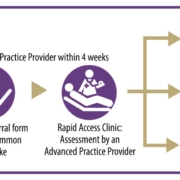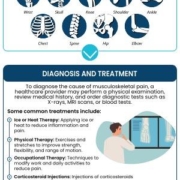5 Empowering Strategies to Manage Fibromyalgia Pain
Living with fibromyalgia can often feel like navigating a relentless storm, where pain and fatigue obscure the path to a fulfilling life. However, amidst the clouds of discomfort, there are strategies that can serve as anchors of empowerment and relief. In this listicle, we will explore 5 empowering strategies to manage fibromyalgia pain, offering you practical tools and insights to reclaim control over your well-being. From lifestyle adjustments to mindfulness techniques, each strategy is designed to help you not only cope with the challenges of fibromyalgia but also enhance your overall quality of life. Join us as we delve into these actionable approaches, equipping you with the knowledge to face each day with renewed strength and resilience.
1) Embrace Mindfulness Meditation: Incorporating mindfulness meditation into your daily routine can help you cultivate a sense of calm and awareness, allowing you to better manage the emotional and physical aspects of fibromyalgia pain. By focusing on the present moment and acknowledging your sensations without judgment, you can reduce stress and enhance your overall well-being
Incorporating mindfulness meditation into your daily routine can be a transformative experience, especially for those navigating the complexities of fibromyalgia. By dedicating just a few minutes each day to this practice, you can cultivate a deeper sense of calm and awareness. Focus on your breath, allowing each inhale and exhale to anchor you in the present moment. As you settle into this stillness, take a moment to acknowledge any sensations in your body without judgment. This gentle observation can help you separate your identity from your pain, fostering a sense of control and empowerment over your experience.
To enhance your mindfulness practice, consider integrating these simple techniques:
- Guided Meditations: Utilize apps or online resources to find guided sessions tailored specifically for fibromyalgia.
- Body Scan: Practice a body scan meditation to increase awareness of tension and discomfort, promoting relaxation.
- Nature Sounds: Incorporate calming nature sounds or soft music to create a soothing atmosphere during your sessions.
- Consistent Schedule: Set aside a specific time each day for meditation, making it a non-negotiable part of your routine.
2) Explore Gentle Movement: Engaging in gentle movement practices such as yoga, tai chi, or swimming can significantly alleviate fibromyalgia symptoms. These activities promote flexibility, improve circulation, and release endorphins, which can help reduce pain levels while also fostering a sense of community and support
Engaging in gentle movement practices can be a game changer for those managing fibromyalgia. Activities like yoga, tai chi, and swimming not only enhance flexibility but also promote better circulation throughout the body. These low-impact exercises are designed to be accessible for individuals of all fitness levels, allowing you to progress at your own pace. As you move, your body releases endorphins—nature’s painkillers—which can help alleviate discomfort and enhance your overall mood. The rhythmic nature of these practices also encourages mindfulness, helping to reduce stress and anxiety that often accompany fibromyalgia.
Participating in group classes or community sessions can further enrich your experience. Connecting with others who share similar challenges fosters a sense of belonging and support, which is vital for emotional well-being. Consider exploring local options or online platforms that offer classes tailored for fibromyalgia sufferers. Here’s a quick comparison of these gentle movement practices:
| Activity | Benefits | Community Aspect |
|---|---|---|
| Yoga | Enhances flexibility, promotes relaxation | Local studios or online groups |
| Tai Chi | Improves balance, reduces stress | Often practiced in parks or community centers |
| Swimming | Low-impact, full-body workout | Join local swim clubs or classes |
3) Prioritize Sleep Hygiene: Establishing a consistent sleep routine is crucial for managing fibromyalgia pain. Creating a calming bedtime environment, limiting screen time before bed, and practicing relaxation techniques can improve the quality of your sleep, which is essential for recovery and pain management
Creating a peaceful and inviting sleep environment can significantly impact your overall well-being. Start by ensuring your bedroom is a sanctuary for rest. Consider these elements for a calming atmosphere:
- Comfortable Bedding: Invest in high-quality pillows and mattresses that support your body.
- Dim Lighting: Use blackout curtains and soft bedside lamps to create a soothing ambiance.
- Temperature Control: Keep your room cool, ideally between 60-67°F (15-19°C), to promote better sleep.
In addition to a serene space, establishing a bedtime routine can signal your body that it’s time to wind down. Aim to disconnect from screens at least an hour before bed, as blue light can interfere with melatonin production. Instead, engage in relaxing activities like:
- Reading: Choose light, enjoyable material to help your mind relax.
- Gentle Yoga or Stretching: These practices can relieve tension and prepare your body for sleep.
- Meditation or Deep Breathing: Spend a few minutes focusing on your breath to calm your mind.
4) Implement a Balanced Diet: Nourishing your body with a balanced diet rich in anti-inflammatory foods can play a vital role in managing fibromyalgia symptoms. Incorporating fruits, vegetables, whole grains, and healthy fats can help reduce inflammation and provide the energy needed to tackle daily challenges
Nourishing your body with a variety of anti-inflammatory foods can significantly help in managing the symptoms of fibromyalgia. A balanced diet not only provides essential nutrients but also supports your immune system and overall well-being. Focus on incorporating a colorful array of fruits and vegetables into your meals, as they are packed with antioxidants that combat inflammation. Consider adding foods rich in omega-3 fatty acids, such as salmon, chia seeds, and walnuts, which are known to reduce inflammatory markers in the body. Whole grains like quinoa, brown rice, and oats provide sustained energy levels, making them excellent choices for those dealing with fatigue associated with fibromyalgia.
In addition to fruits, vegetables, and whole grains, it’s essential to include healthy fats in your diet. Foods such as avocados, olive oil, and nuts can help promote heart health while also reducing inflammation. Staying hydrated is equally important; aim for at least eight glasses of water a day to help your body function optimally. Below is a simple table to illustrate some key anti-inflammatory foods and their benefits:
| Food | Benefits |
|---|---|
| Blueberries | Rich in antioxidants; may reduce inflammation. |
| Spinach | High in vitamins and minerals; supports immune function. |
| Salmon | Source of omega-3 fatty acids; helps lower inflammation. |
| Turmeric | Contains curcumin; has strong anti-inflammatory properties. |
5) Seek Support Networks: Connecting with others who understand your struggles can be incredibly empowering. Joining support groups, whether in-person or online, allows you to share experiences, gain insights, and foster friendships, creating a sense of belonging that can help alleviate feelings of isolation often associated with chronic pain
Connecting with others who share similar experiences can provide a vital source of strength and understanding in your journey with fibromyalgia. Support groups, whether they meet in person or exist in the vast realm of online communities, create safe spaces where you can openly discuss your challenges and victories. Within these groups, you can share personal stories, exchange coping strategies, and learn from the experiences of others who truly understand the nuances of living with chronic pain. This collective wisdom can empower you to navigate your own journey with renewed confidence and resilience.
Moreover, building friendships within these networks can significantly reduce feelings of isolation and loneliness that often accompany fibromyalgia. Engaging in conversations with those who empathize with your struggles fosters a sense of belonging that is both comforting and motivating. Here are some ways to connect:
- Online Forums: Join platforms like Reddit or dedicated fibromyalgia forums to share your experiences and gain insights.
- Local Support Groups: Search for community centers or hospitals that offer regular meet-ups for fibromyalgia patients.
- Social Media: Follow fibromyalgia advocacy pages on platforms like Facebook or Instagram to stay connected and informed.
- Virtual Meet-ups: Participate in online video calls or webinars to engage with others from the comfort of your home.
The Conclusion
As we conclude our exploration of these five empowering strategies to manage fibromyalgia pain, it’s important to remember that each journey is unique. What works for one person may not work for another, but the key lies in experimenting with different approaches and finding the right combination that suits your individual needs. By embracing self-care, staying informed, and connecting with supportive communities, you can reclaim a sense of control over your life.
Fibromyalgia may present its challenges, but with resilience and the right tools at your disposal, you can navigate the complexities of this condition with grace. So take a deep breath, trust in your strength, and step forward into a world where you are not defined by your pain, but empowered by your journey. Thank you for joining us on this path to understanding and managing fibromyalgia—may you find peace and strength in every step you take.










Leave a Reply
Want to join the discussion?Feel free to contribute!